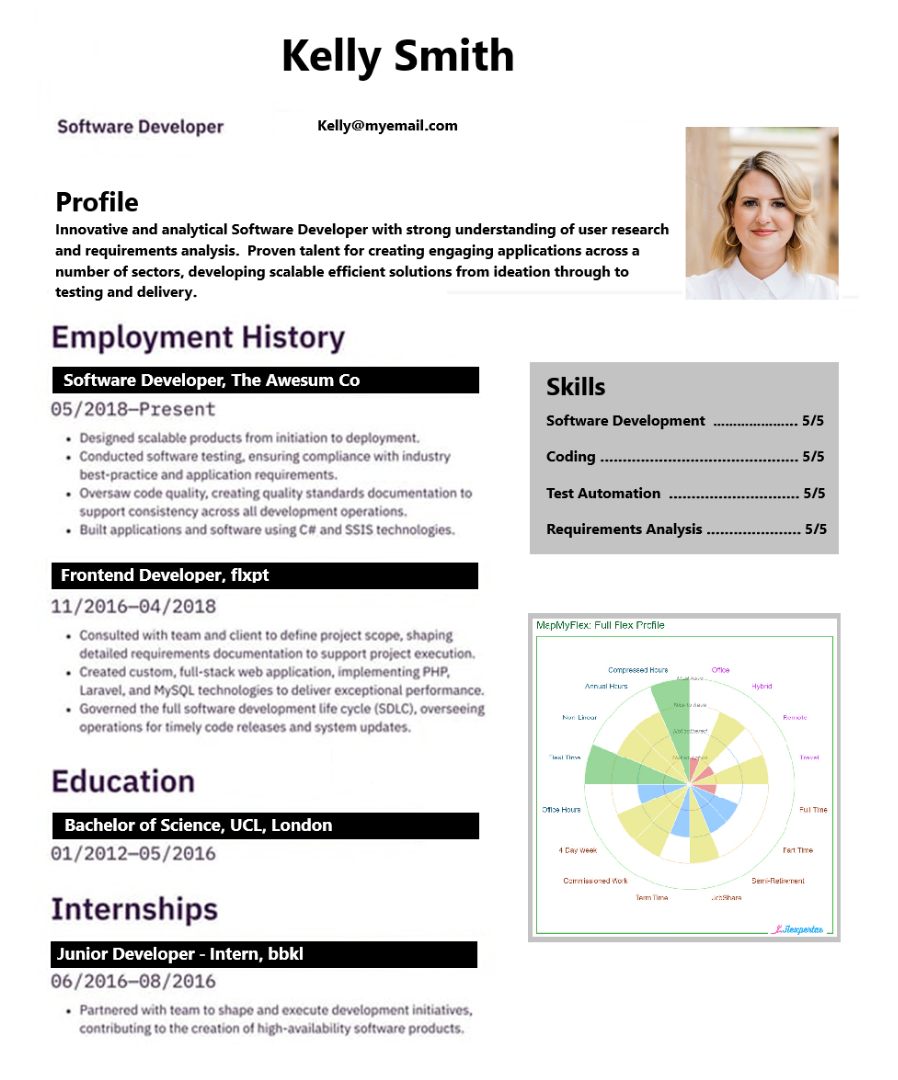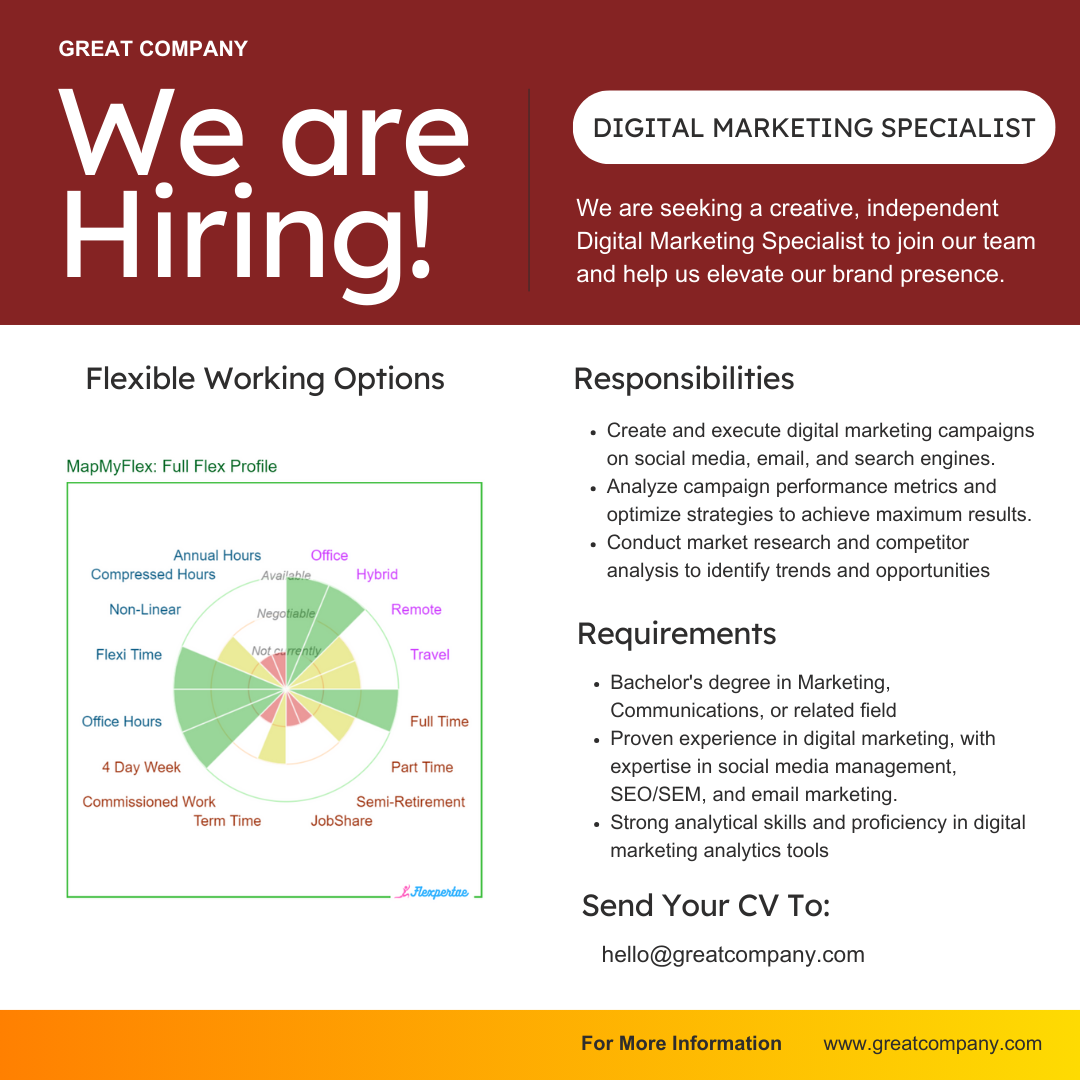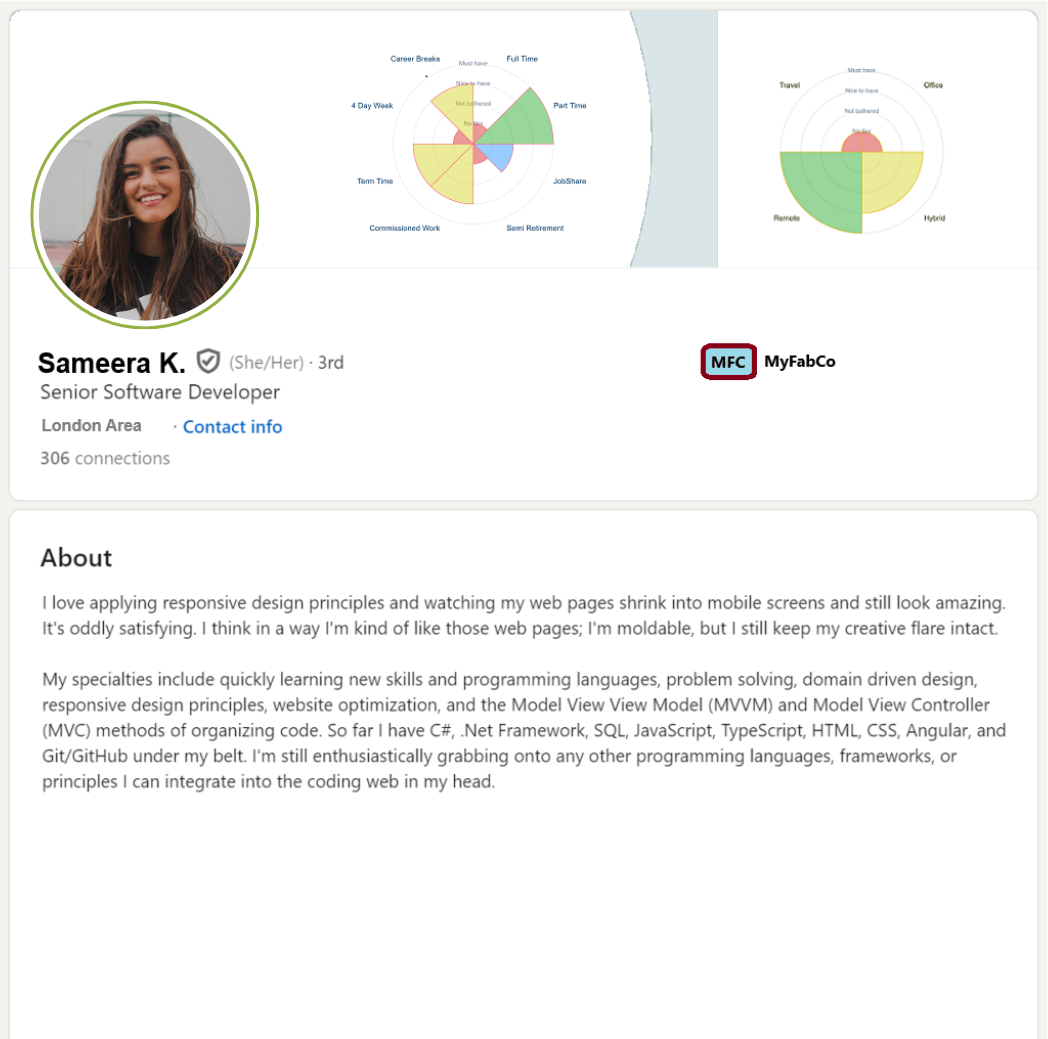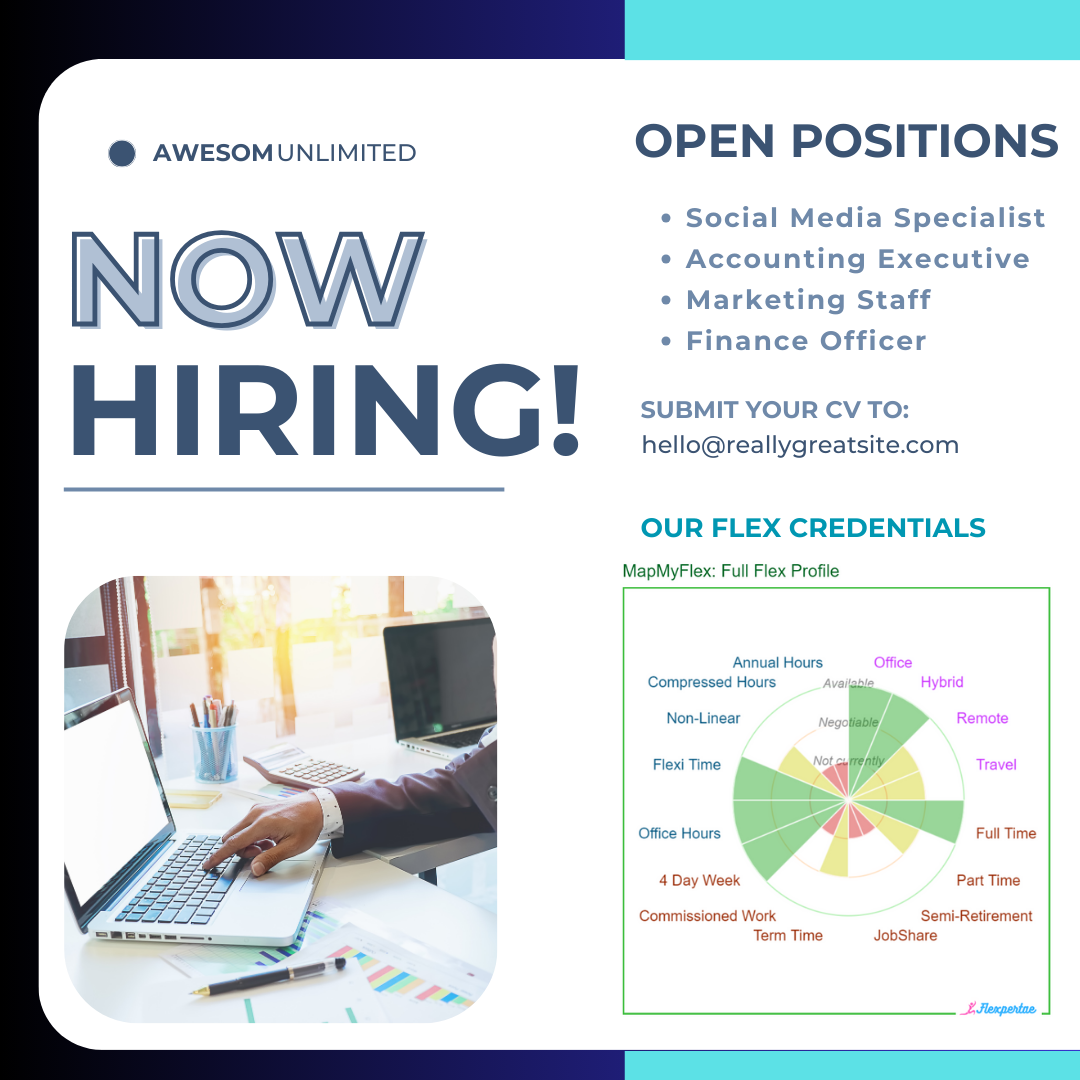Examples





Our lives are not linear - they consist of phases
- - Our priorities evolve
- - Our skills and experiences grow
- - Our flexibility needs peak and trough
So it makes sense that our careers reflect this
Flexible working preferences are specific to each persons unique circumstances.
To help illustrate this we've created a few personas and their mapped flexible working needs. Because by understanding individual needs we can help them become their most effective and efficient.
We can help change the future of work to tailor and optimise ways of working through transparency and displaying our flexible working profiles.
Flexible working is increasingly important to both retaining and hiring talent.
As a company you can map your flex profiles at a company, team, or individual job spec level. This communicates not only your committment to flexible working but also contributes to CSR and DEI initiatives.
You can also map your employees' flex profiles, which could aid in discussions around requesting flexible working, as well as presenting insights on new modes of employee compensation.
Why do we stress "must have" vs "nice to have"?
Where flexible working is the difference between
- being in paid employment and financially independent vs
- using up savings which, when depleted, leave a person at risk of poverty and dependent on the state.
The absence of flexible working options is a barrier to employment for many people, resulting in skilled workers dropping out of the workforce, and gifted people with potential being excluded.
Where flexible working isn't a barrier to employment but a preference to
- allow a better work/life balance,
- allow time for family or other activities
- help maintain better mental and physical health
The absence of flexible working may not result in people leaving the workforce though may result in them leaving employers who are unwilling to offer flexibility.
Current Pain Points and Challenges with Flexible Working Communications
- Misleading job ads claiming flexible working support which
turns out to be either
insufficient or barely any flexibility allowed
- Most flexible working support appears to be just allowing
hybrid working, which
falls short
for those for whom flexibility is a "must-have"
- Frustrating to go through job application and interview
process only to find late
in
process that flexible working support is inadequate e.g. the
organisation allows
working
from home one day a fortnight!
- Everyone's time is precious. Clarity upfront regarding flexible working availability would allow time-poor job seekers to focus on employers who better match their values and needs.
- Hiring process requires investment of people, time and
money. Finding candidates
who
better match the job spec and who match the organisation's
flavour of flexible
working
offering would help improve the efficiency of the process.
- Managing expectations more clearly would reduce
disappointment during later stages
of the hiring process.
- Attracting diverse talent could be helped by considering
the company's flexible
working support
and displaying this clearly.
- Employee retention and satisfaction strategy that addresses non financial options.
Use Cases
Flexible working is an umbrella term which most people think of as simply working from home or hybrid working.
For job seekers who have multi dimensional flexible working needs it is challenging to raise these at the outset, and takes time to explain. Additionally when explaining with words it seems a bigger issue than it needs to be.
That's where our visual charts can easily communicate the message at a glance.
The new Flexible Working Bill updates will be rolling out this year. Get ahead of the potential influx of flexible working requests by gaining insights into what your employees are thinking in the flexible working space.
Be better informed and therefore better prepared.
Time is precious and finding talented people is a big investment for any organisation.
Being able to clearly display or communicate your company's stance on flexible working is key to attracting top talent.
MMF profiles show your commitment to flexible working and transparency on what is available at your company.
Individual teams may have different flexible working support for their team and for individual roles.
MapMyFlex can be used to create tailored flexible working profiles for individual job specifications. This would reduce disappointment later in the process by managing expectations early on.
Improve efficiency and reduce waste in the hiring process.
Many organisations offer non financial "perks" as a way to improve employee morale, be attractive to new talent and reward employees.
These can include vouchers, discounts with certain brands and products, cinema outings and so on. Whilst these are nice, they aren't useful or even used by many employees.
Understanding an employees flexible working needs and preferences, updated on a regular basis to reflect our ever changing life phases, help provide insights into what motivations and non financial incentives could be offered on an individual basis.
Surveys have shown that a significant proportion of workers would take a lower salary in favour of greater flexible working.